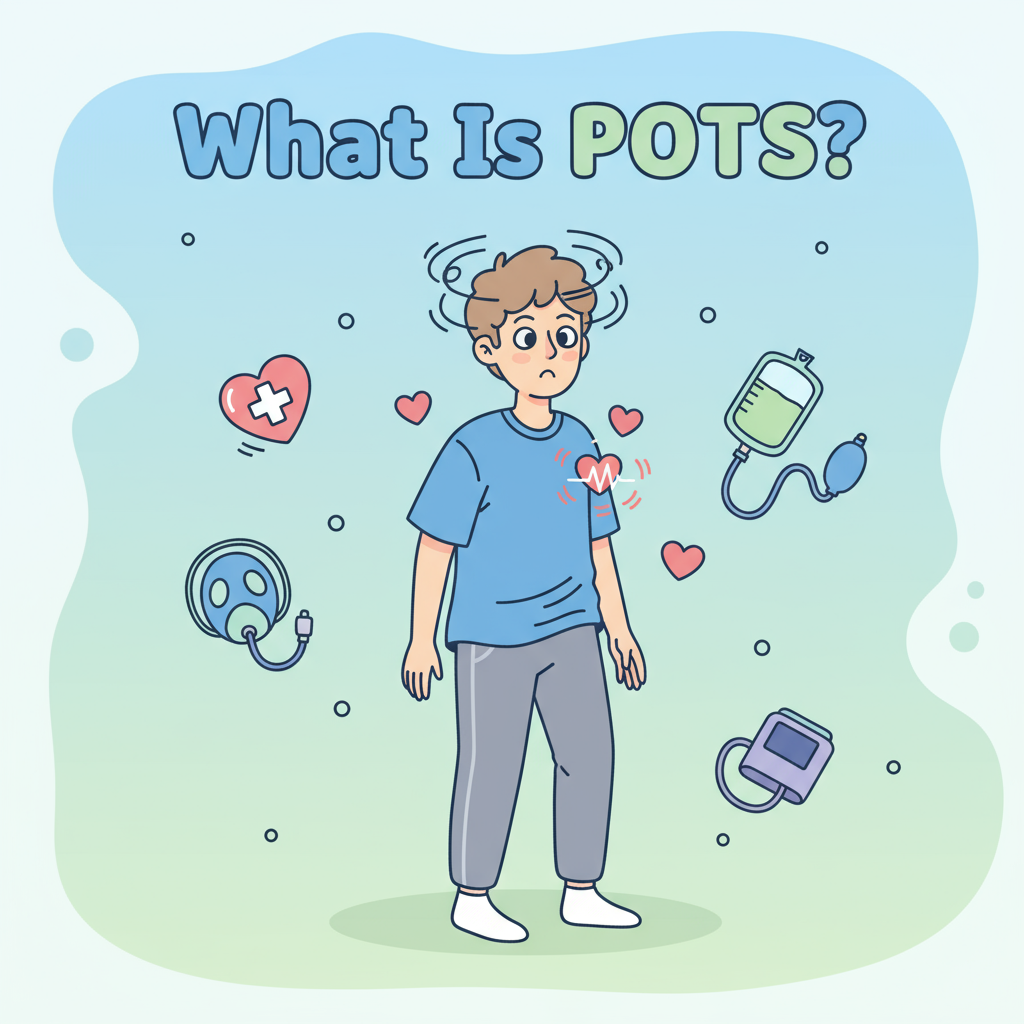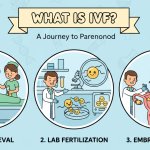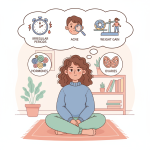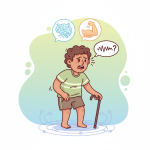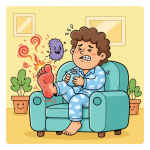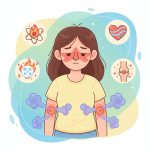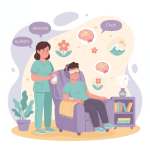Have you ever experienced dizziness, a rapid heartbeat, or fainting just by standing up? If so, you could be one of the millions affected by Postural Orthostatic Tachycardia Syndrome, or POTS. This condition affects the autonomic nervous system and causes a significant increase in heart rate when moving from sitting or lying down to standing. In fact, POTS affects approximately 1 to 3 million people in the United States alone, most of whom are young to middle-aged women. This blog will take you through everything you need to know about POTS, from symptoms and causes to nutrition, fitness, preventive care, mental wellness, and practical daily tips to manage this condition effectively.
POTS Definition and Symptoms
Postural Orthostatic Tachycardia Syndrome (POTS) is a disorder characterized by an excessive increase in heart rate—more than 30 beats per minute—within 10 minutes of standing up, without a significant drop in blood pressure. This results in symptoms like dizziness, lightheadedness, fainting, fatigue, headaches, and cognitive difficulties commonly referred to as “brain fog.” The symptoms often worsen with standing or physical activity and can significantly impact daily life, ranging from mild discomfort to severe disability.
Causes and Risk Factors
POTS can develop after viral infections, surgery, trauma, or as a result of autoimmune diseases. More recently, it has been linked to Long COVID. It predominantly affects women aged 15 to 50, possibly due to hormonal factors. Genetic predisposition and conditions like Ehlers-Danlos syndrome also increase vulnerability to POTS.
Who Is Affected?
While POTS can occur at any age, it primarily affects young and middle-aged women. Awareness and diagnosis are increasing as research progresses, leading to better management and support for those affected.
Nutrition and Diet for POTS
Importance of Hydration and Salt Intake
Proper hydration and salt intake play a crucial role in managing POTS symptoms. Increasing salt intake to 6 to 10 grams per day helps expand blood volume, reducing symptoms like dizziness and fatigue. Drinking 2 to 3 liters of fluids daily, preferably water and non-caffeinated beverages, supports this effect. Broths and soups are excellent sources of safe salt supplementation, while processed foods with excess unhealthy salts should be avoided.
Foods to Include and Avoid
A diet rich in proteins, healthy fats, and complex carbohydrates supports overall health and stabilizes blood pressure. Avoiding large, heavy meals and high sugar or carbohydrate spikes can prevent symptom exacerbation. Small, frequent meals (4 to 6 per day) are recommended to maintain energy and reduce gastrointestinal discomfort.
Managing Gastrointestinal Symptoms
Many individuals with POTS experience gastrointestinal issues such as constipation, diarrhea, or delayed gastric emptying. Fiber intake should be adjusted according to tolerance, and smaller meals help reduce these symptoms, enhancing nutrient absorption and comfort.
Fitness and Exercise Guidelines
Benefits of Exercise in POTS
Regular exercise is essential in improving cardiovascular health and reducing the severity of POTS symptoms. Although exercise intolerance is common initially, a gradual, consistent exercise program can significantly improve physical functioning and quality of life.
Recommended Exercise Types and Progression
Begin with recumbent exercises such as swimming, rowing, or recumbent biking to avoid symptom flares caused by upright posture. Start with as little as 5 minutes per day, gradually increasing to 30 minutes or more over several months. Incorporate strength training focusing on the legs and core with seated or floor exercises, enhancing muscle tone and circulatory efficiency.
Precautions and Tips
Monitor heart rate during exercise to avoid overexertion. Avoid sudden changes in posture, and progress slowly. Use compression garments during workouts to assist blood flow and reduce venous pooling, and consult a healthcare professional before starting an exercise program.
Preventive Care and Lifestyle Adjustments
Compression Garments and Volume Expansion
Wearing compression socks and abdominal binders improves blood circulation and reduces blood pooling in the legs, mitigating symptoms. Elevating the head of the bed during sleep aids fluid retention and volume expansion, providing symptom relief.
Managing Symptoms with Daily Practices
Physical countermeasures like leg crossing, muscle tensing, and avoiding prolonged standing reduce dizziness and fainting risk. Maintaining a regular sleep schedule and regulating body temperature through appropriate clothing also support symptom management.
When to Seek Medical Help
If symptoms persist or worsen, medical evaluation is essential. Newer treatments, including medications like ivabradine, can help control heart rate and lessen symptoms. Early diagnosis and treatment improve outcomes significantly.
Mental Wellness and Coping Strategies
Psychological Impact of POTS
The chronic symptoms of POTS often cause anxiety, depression, and cognitive challenges such as brain fog and mental fatigue. These psychological aspects can exacerbate the physical symptoms, making holistic care necessary.
Mindfulness, Cognitive Behavioral Therapy, and Support
Mindfulness meditation reduces stress and can alleviate symptom severity. Cognitive Behavioral Therapy (CBT) helps patients develop coping mechanisms for anxiety and depression. Joining support groups offers emotional relief and shared experiences, fostering resilience.
Building Resilience and Positive Lifestyle Habits
Stress management, regular sleep, and gentle exercise improve overall well-being. A multidisciplinary approach involving medical, nutritional, psychological, and physical therapy specialists yields the best results.
Practical Daily Tips for Living with POTS
-
Eat small, frequent meals (4-6 per day) to prevent blood flow changes that follow large meals.
-
Stay hydrated by drinking fluids steadily throughout the day; consider salt supplementation if recommended.
-
Wear compression garments during activities and avoid long periods of standing still.
-
Track symptoms and potential triggers to communicate effectively with healthcare providers.
-
Practice gentle, progressive exercises to build stamina and reduce symptoms over time.
FAQs about POTS
-
What causes POTS?
POTS can result from viral infections, autoimmune conditions, genetic predisposition, or be triggered by trauma or surgery. -
Is POTS curable?
There is currently no cure for POTS, but symptoms can be effectively managed with lifestyle adjustments, nutrition, exercise, and medication. -
Is POTS dangerous?
While POTS is usually not life-threatening, it can severely impact daily activities and quality of life if untreated. -
What foods help with POTS?
A diet high in salt and fluids, alongside balanced nutrition with proteins and complex carbs, helps manage symptoms. -
Can exercise make POTS worse?
Improper exercise may worsen symptoms. Following a structured, gradual exercise program with medical guidance is essential.
Conclusion
Postural Orthostatic Tachycardia Syndrome is a complex condition, but with proper understanding and management, individuals can lead fulfilling lives. Focus on hydration, nutrition, gentle exercise, mental wellness, and preventive care to minimize symptoms. If you or a loved one experiences dizziness, rapid heart rate, or fatigue upon standing, consult a healthcare professional promptly. For continued learning, explore our articles on heart health, nutrition tips, and mental wellness to support your journey. Take proactive steps today to improve your health and well-being.
